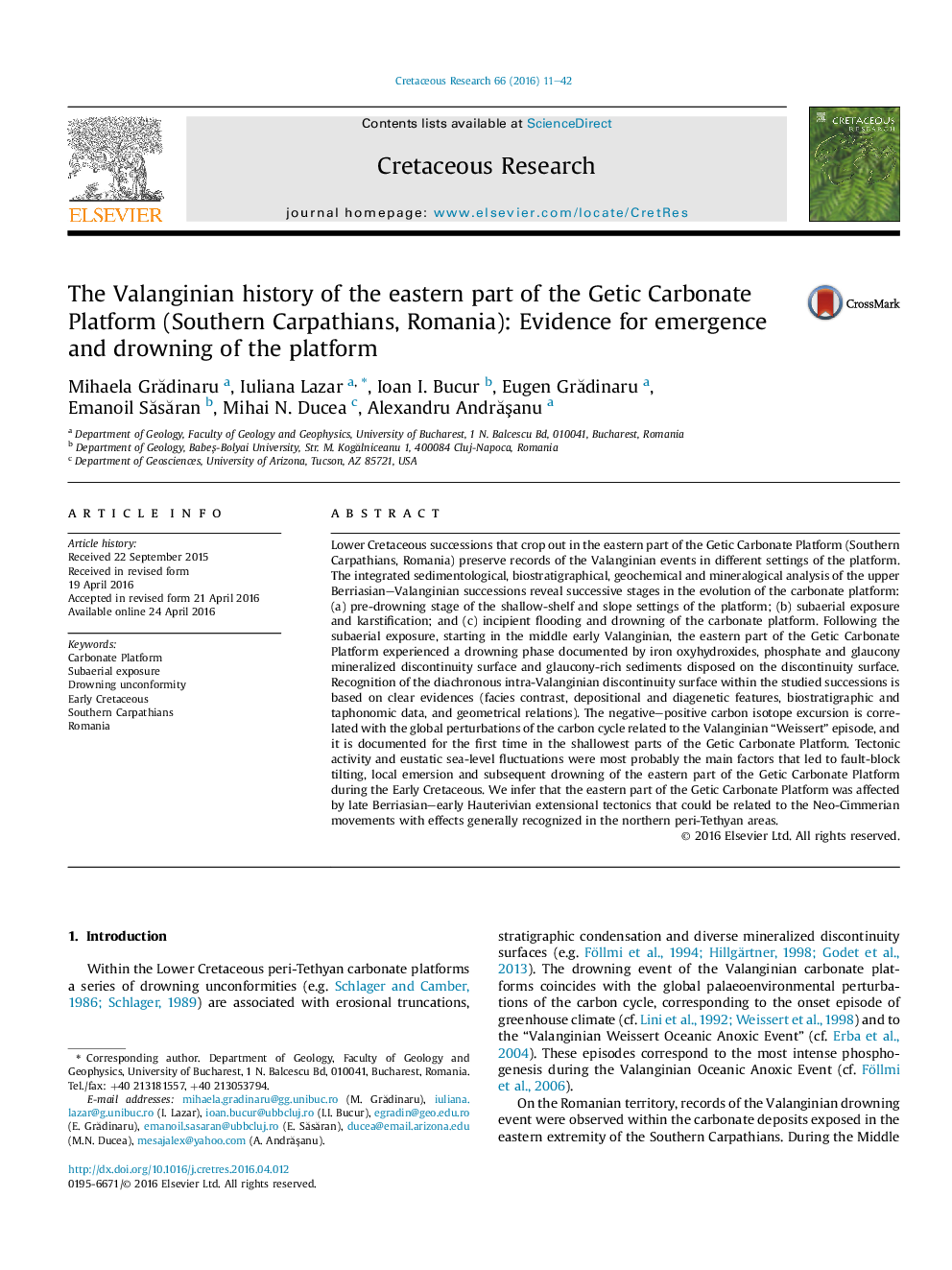| کد مقاله | کد نشریه | سال انتشار | مقاله انگلیسی | نسخه تمام متن |
|---|---|---|---|---|
| 4746699 | 1642057 | 2016 | 32 صفحه PDF | دانلود رایگان |
• We document the early Cretaceous drowning history of the Getic Carbonate Platform.
• The drowning event was related to extensional tectonics and eustatic fluctuations.
• The drowning event was preceded by subaerial exposure and karstification.
• The biostratigraphic data indicates Lower Valanginian stratigraphic gaps.
• The carbon-isotope data correspond to the global Valanginian Weissert episode.
Lower Cretaceous successions that crop out in the eastern part of the Getic Carbonate Platform (Southern Carpathians, Romania) preserve records of the Valanginian events in different settings of the platform. The integrated sedimentological, biostratigraphical, geochemical and mineralogical analysis of the upper Berriasian–Valanginian successions reveal successive stages in the evolution of the carbonate platform: (a) pre-drowning stage of the shallow-shelf and slope settings of the platform; (b) subaerial exposure and karstification; and (c) incipient flooding and drowning of the carbonate platform. Following the subaerial exposure, starting in the middle early Valanginian, the eastern part of the Getic Carbonate Platform experienced a drowning phase documented by iron oxyhydroxides, phosphate and glaucony mineralized discontinuity surface and glaucony-rich sediments disposed on the discontinuity surface. Recognition of the diachronous intra-Valanginian discontinuity surface within the studied successions is based on clear evidences (facies contrast, depositional and diagenetic features, biostratigraphic and taphonomic data, and geometrical relations). The negative–positive carbon isotope excursion is correlated with the global perturbations of the carbon cycle related to the Valanginian “Weissert” episode, and it is documented for the first time in the shallowest parts of the Getic Carbonate Platform. Tectonic activity and eustatic sea-level fluctuations were most probably the main factors that led to fault-block tilting, local emersion and subsequent drowning of the eastern part of the Getic Carbonate Platform during the Early Cretaceous. We infer that the eastern part of the Getic Carbonate Platform was affected by late Berriasian–early Hauterivian extensional tectonics that could be related to the Neo-Cimmerian movements with effects generally recognized in the northern peri-Tethyan areas.
Journal: Cretaceous Research - Volume 66, November 2016, Pages 11–42
